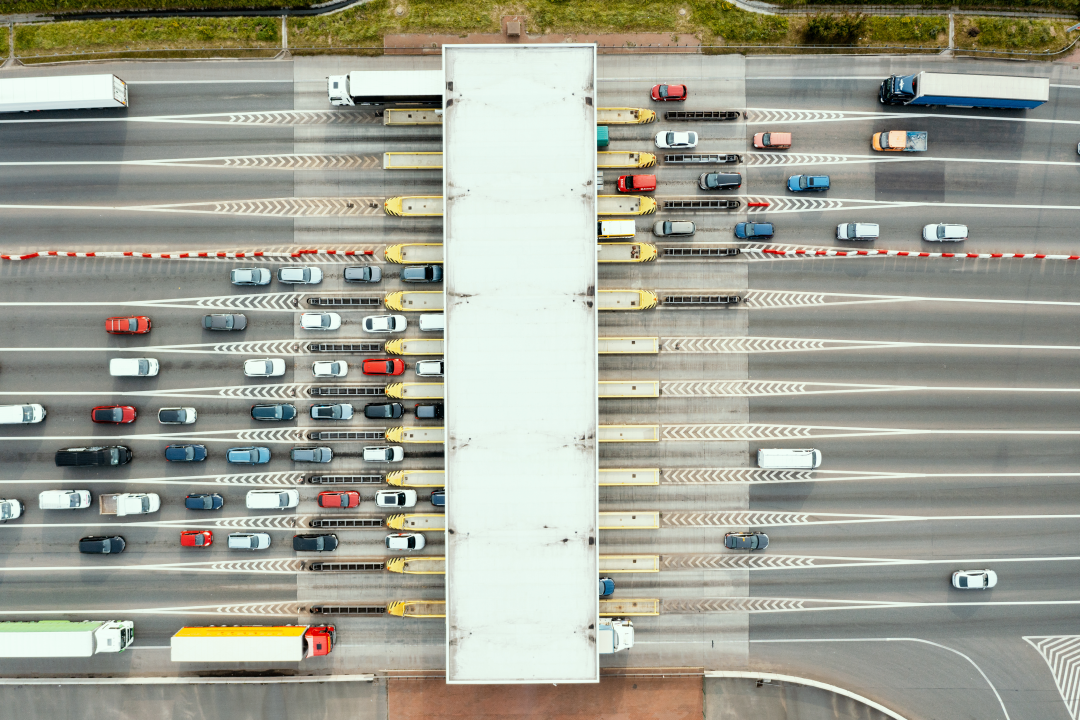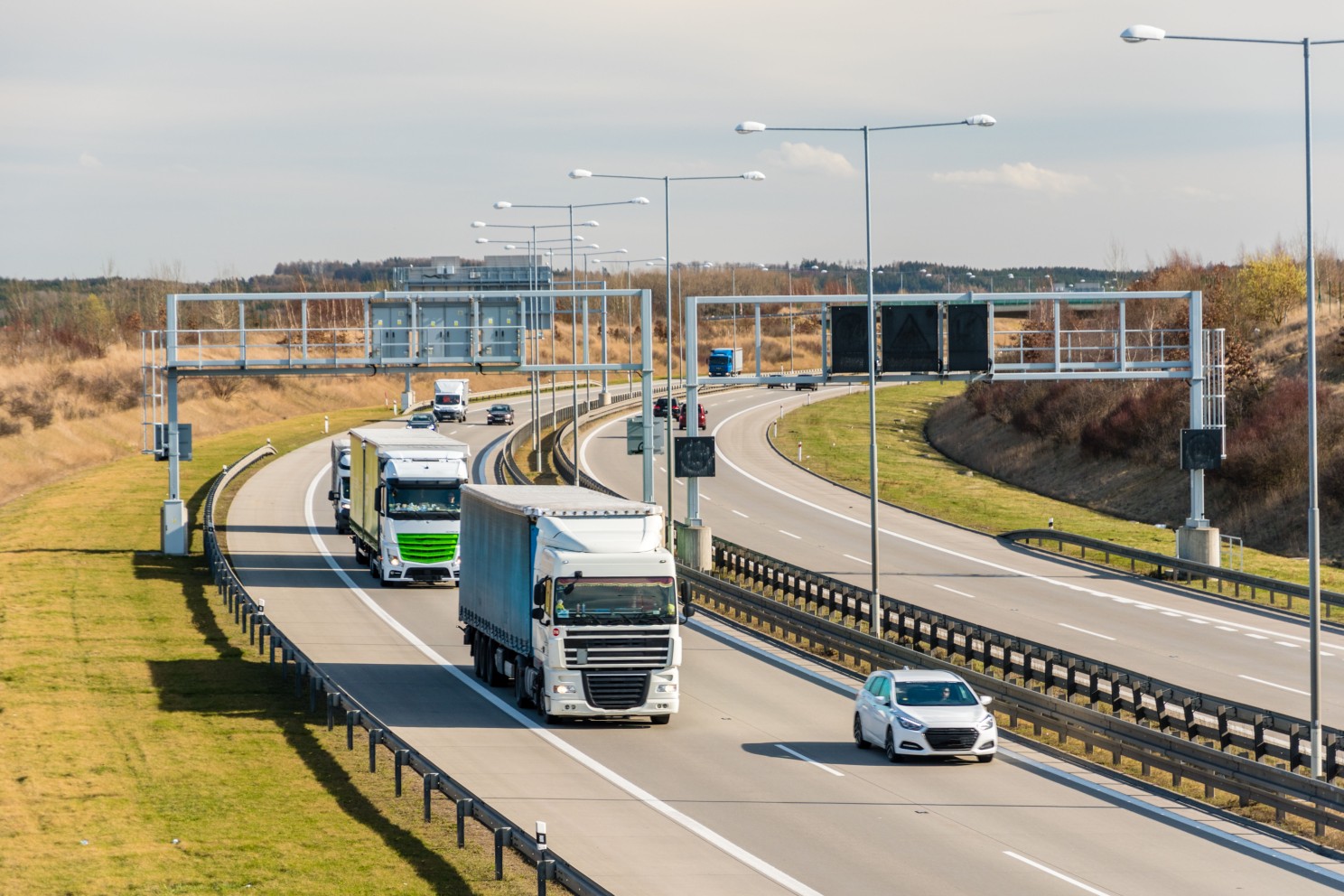
Susie Jones
Zum Verständnis der neuen Lkw-Mautsätze in Deutschland
Erstellt: 12.08.2024
•
Aktualisiert: 12.08.2024
Bei den laufenden Änderungen des deutschen Lkw-Mautsystems ist es leicht, sich in den vielen Änderungen und Vorschriften zu verirren. Fast [83 %] (https://impargo.de/en/blog/germany-toll-collect-hgv-3.5t-2024) der lokalen Lkw-Fahrten, die rund 200 Kilometer umfassen, werden bereits auf mautpflichtigen Straßen durchgeführt - was die Auswirkungen der deutschen Maut auf die Flottenausgaben verdeutlicht.
Mit dem Anstieg der Mautsätze treffen diese neuen Änderungen die Flottenunternehmen hart. Die Änderungen der Maut in den Jahren 2023 und 2024 resultieren aus dem von der Bundesregierung unterstützten Mautänderungsgesetz, das Folgendes vorsieht:
Neue Mautsätze
Die Einführung von CO2-Emissionsgebühren
Abschaffung der Mautbefreiung für erdgasbetriebene Fahrzeuge
Ausdehnung der Mautpflicht auf Fahrzeuge mit einem zulässigen Gesamtgewicht von über 3,5 Tonnen.
1. Januar 2023 Änderungen
Anfang 2023 stiegen die Mautsätze. Drei Faktoren waren ausschlaggebend:
Anzahl der Achsen
Emissionsklasse
Zulässiges Gesamtgewicht der Fahrzeugkombination.
1. Dezember 2023 Änderungen
Im Dezember wurden die CO2-Emissionsklassen als neues Tarifkriterium eingeführt. Berechnet auf einen Zuschlag von 200 Euro pro Tonne CO2-Emissionen - dieser wird für alle Fahrzeuge mit einem zulässigen Gesamtgewicht von über 7,5 Tonnen erhoben. Die Höhe der einzelnen Zuschläge, zusätzlich zur bisherigen Maut, hängt von der Emissionsklasse ab.
Klasse 1 - Lkw mit den höchsten CO2-Emissionen und damit dem höchstmöglichen Aufschlag. Die Firma TollCollect, die die Lkw-Maut in Deutschland erhebt, stuft alle zugelassenen Fahrzeuge in diese Emissionsklasse ein - Flottenbetreiber müssen sich an sie wenden, um eine bessere Einstufung zu beantragen, wenn sie dafür in Frage kommen.
Klassen 2 und 3 - Beide Klassen werden bei der Eingabe der Fahrzeugdaten in das TollCollect-Portal zugewiesen.
Klasse 4 - Emissionsarme Lkw, z. B. Erdgasfahrzeuge.
Klasse 5 - Emissionsfreie Lkw.
1. Januar 2024 Änderungen
Am 1. Januar 2024 entfällt die Mautbefreiung für erdgasbetriebene Fahrzeuge.
1. Juli 2024 Änderungen
Die Maut wird für alle Fahrzeuge mit einem technisch zulässigen Gesamtgewicht von mehr als 3,5 Tonnen fällig. Es gibt einige Ausnahmen von dieser neuen Änderung:
Emissionsfreie Fahrzeuge mit einem technisch zulässigen Gesamtgewicht von mehr als 4,25 Tonnen.
Emissionsfreie schwere Nutzfahrzeuge - Diese Ausnahme gilt bis Ende Dezember 2025.
Von Gewerbebetrieben genutzte Fahrzeuge - Gilt für Fahrzeuge mit einem Gesamtgewicht von weniger als 7,5 Tonnen.

Vorbereitung Ihres Fuhrparks auf die Änderungen im Juli
Vor dem 1. Juli müssen Sie prüfen, ob Ihre Fahrzeuge mautpflichtig sind, und wenn ja, wie Sie die Maut bezahlen wollen.
Überprüfen Sie Ihre Fahrzeuge
Überprüfen Sie Teil eins der Zulassungsbescheinigung in Feld F1. Wenn Ihr Fahrzeug eine technisch zulässige Gesamtmasse (TPMLM) von mehr als 3,5 Tonnen hat, müssen Sie die Maut bezahlen. Für Lkw mit einer zulässigen Gesamtmasse von genau 3,5 Tonnen oder weniger werden keine Mautgebühren erhoben.
Fahrzeugkombinationen - wenn das Zugfahrzeug eine zulässige Gesamtmasse von mehr als 3,5 Tonnen hat, sind Sie mautpflichtig. Eine Kombination mit einem TPMLM über 3,5 Tonnen unterliegt nicht der Mautpflicht, wenn das Zugfahrzeug eine TPMLM von 3,5 Tonnen oder weniger hat.
Die Mautpflicht gilt für Fahrzeuge, die für den Straßengüterverkehr bestimmt sind oder verwendet werden.
Handwerksbetriebe sind unter bestimmten Voraussetzungen von der Maut befreit.
Wie man die Maut bezahlt
Am bequemsten ist die Bezahlung mit einer On-Board-Unit (OBU), die von Toll Collect, den Anbietern des Europäischen Elektronischen Mautdienstes (EETS) oder deren Vertriebspartnern bereitgestellt wird.
Für die Bezahlung mit einer OBU ist eine Registrierung bei Toll Collect und die Vereinbarung eines Installationstermins erforderlich - nach der Installation ist das Gewicht auf "<7,5 Tonnen" einzustellen. Mit einer OBU wird die automatische Erhebung auf Autobahnen und Bundesstraßen ab dem 1. Juli 2024 erfolgen.
Alternativ können Sie die Maut auf der Website von Toll Collect (https://www.toll-collect.de/en/tollcollect/tchomepage.html) oder über die App (https://apps.apple.com/gb/app/toll-collect-mauteinbuchung/id1321965602) bezahlen, bevor Sie Ihre Reise antreten.
Ist mein gewerbliches Fahrzeug von den neuen deutschen Mautsätzen befreit?
Um in den Genuss der Handwerkerbefreiung zu kommen, gilt Folgendes:
Das Fahrzeug darf nur von Mitarbeitern des Gewerbebetriebs gefahren werden.
Die beförderten Materialien, Ausrüstungen oder Maschinen müssen für die Erbringung der Dienstleistungen und Arbeiten des Handelsunternehmens erforderlich sein.
Die beförderten handwerklichen Waren müssen im Betrieb des Gewerbetreibenden hergestellt, verarbeitet oder repariert worden sein.
Sie können Ihre Gewerbefahrzeuge online unter Toll Collect registrieren. Weitere Informationen zu den Ausnahmeregelungen finden Gewerbetreibende auf der Seite FAQ von Toll Collect.
Dürfen Lkw in Deutschland sonntags fahren?
Um das Verkehrsaufkommen zu verringern und die Straßen sicher zu halten, gelten zu bestimmten Zeiten Fahrverbote für gewerbliche Lkw. Das Verbot gilt an Sonntagen, d. h. Lkw-Fahrer mit einem Lkw von mehr als 7,5 Tonnen dürfen ihn von 12 bis 22 Uhr nicht bewegen. Darüber hinaus gilt das Fahrverbot auch an den folgenden Feiertagen:
Neujahrstag - 1. Januar
Karfreitag - 18. April
Ostermontag - 21. April
Tag der Arbeit - 1. Mai
Himmelfahrtstag - 29. Mai
Pfingsten - 8. Juni
Tag der Deutschen Einheit - 3. Oktober
Weihnachten und Boxing Day - 25. und 26. Dezember
Während der Hauptferienzeit vom 1. Juli bis zum 31. August gilt das Lkw-Fahrverbot an Samstagen, d. h. Lkw-Fahrer dürfen zwischen 7 und 20 Uhr nicht fahren, wenn ein hohes Fahrzeugaufkommen auf den Straßen herrscht.



